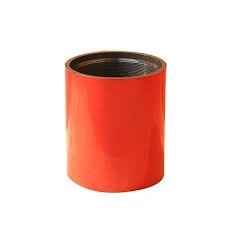- Afrikaans
- Albanian
- Amharic
- Arabic
- Armenian
- Azerbaijani
- Basque
- Belarusian
- Bengali
- Bosnian
- Bulgarian
- Catalan
- Cebuano
- Corsican
- Croatian
- Czech
- Danish
- Dutch
- English
- Esperanto
- Estonian
- Finnish
- French
- Frisian
- Galician
- Georgian
- German
- Greek
- Gujarati
- Haitian Creole
- hausa
- hawaiian
- Hebrew
- Hindi
- Miao
- Hungarian
- Icelandic
- igbo
- Indonesian
- irish
- Italian
- Japanese
- Javanese
- Kannada
- kazakh
- Khmer
- Rwandese
- Korean
- Kurdish
- Kyrgyz
- Lao
- Latin
- Latvian
- Lithuanian
- Luxembourgish
- Macedonian
- Malgashi
- Malay
- Malayalam
- Maltese
- Maori
- Marathi
- Mongolian
- Myanmar
- Nepali
- Norwegian
- Norwegian
- Occitan
- Pashto
- Persian
- Polish
- Portuguese
- Punjabi
- Romanian
- Russian
- Samoan
- Scottish Gaelic
- Serbian
- Sesotho
- Shona
- Sindhi
- Sinhala
- Slovak
- Slovenian
- Somali
- Spanish
- Sundanese
- Swahili
- Swedish
- Tagalog
- Tajik
- Tamil
- Tatar
- Telugu
- Thai
- Turkish
- Turkmen
- Ukrainian
- Urdu
- Uighur
- Uzbek
- Vietnamese
- Welsh
- Bantu
- Yiddish
- Yoruba
- Zulu
pup joint drilling
The Role of Pup Joint Drilling in Modern Oil and Gas Operations
Pup joint drilling is an essential component of the oil and gas industry, playing a vital role in the efficiency and effectiveness of drilling operations. This specialized process involves the use of pup joints—short lengths of pipe that can be inserted into the drilling string to adjust the overall length and accommodate various drilling conditions. Understanding pup joints and their applications can significantly enhance drilling performance and control costs.
Pup joints are typically used for several reasons. One of the primary purposes is to adjust the height of the drilling assembly to match particular geological formations, which can vary greatly depending on the location. By incorporating pup joints, drilling engineers can fine-tune the depth of the drill bit, thereby increasing the likelihood of striking oil and gas deposits. This adaptability is crucial in a field where geological unpredictability can lead to unexpected challenges.
In addition to depth adjustment, pup joints serve to manage changes in pressure throughout the drilling process. As drilling progresses, the pressure within the wellbore can fluctuate, which can potentially disrupt operations or lead to dangerous blowouts. By strategically placing pup joints in the drilling string, operators can accommodate these pressure changes and maintain better control of the well. This capability is particularly important in deepwater drilling operations where pressures can be extreme, requiring highly specialized equipment and techniques.
Another vital function of pup joints is in the context of maintenance and repairs. During the drilling process, equipment can experience wear and tear, leading to potential failures if not properly addressed. Inserting pup joints into the drilling string can facilitate easier maintenance without requiring the entire drill string to be pulled from the wellbore. This not only saves valuable time but can also reduce costs associated with equipment downtime and lost production.
pup joint drilling

Furthermore, pup joints offer flexibility in terms of wellbore design. In many cases, the ideal diameter of the drilling string may not be consistent throughout the entire well. Pup joints can be sourced in varying lengths and specifications, allowing for a tailored drilling solution that improves performance. This versatility enables drilling engineers to adapt to various scenarios, ensuring that operations are both safe and efficient.
While pup joint drilling has numerous advantages, it also requires careful planning and execution. The proper selection of pup joints is critical; factors such as material composition, strength, and compatibility with existing equipment must be taken into account. Engineers must also perform rigorous calculations to determine the optimal placement and length of pup joints within the drilling string. Failure to do so could lead to structural integrity issues or equipment failures.
Another consideration is the environmental impact of drilling operations. The oil and gas industry is under constant scrutiny for its environmental practices, and minimizing waste and risk is paramount. Utilizing pup joints can contribute to more efficient drilling practices, decreasing the likelihood of spills or other environmental hazards. By optimizing the drilling process, pup joints help to reduce the overall footprint of oil and gas operations, aligning with the industry's ongoing commitment to sustainability.
In conclusion, pup joint drilling is a sophisticated process integral to modern oil and gas operations. The use of pup joints not only enhances the adaptability and performance of drilling assemblies but also allows engineers to better manage pressures, maintain equipment, and design wells more effectively. While they present unique challenges, the benefits of incorporating pup joints into drilling operations are undeniable, contributing to safer and more efficient resource extraction. As technology continues to evolve, so too will the methods and materials used in pup joint drilling, ensuring that this practice remains a cornerstone of the oil and gas industry for years to come.
-
Tubing Pup Joints: Essential Components for Oil and Gas OperationsNewsJul.10,2025
-
Pup Joints: Essential Components for Reliable Drilling OperationsNewsJul.10,2025
-
Pipe Couplings: Connecting Your World EfficientlyNewsJul.10,2025
-
Mastering Oilfield Operations with Quality Tubing and CasingNewsJul.10,2025
-
High-Quality Casing Couplings for Every NeedNewsJul.10,2025
-
Boost Your Drilling Efficiency with Premium Crossover Tools & Seating NipplesNewsJul.10,2025







